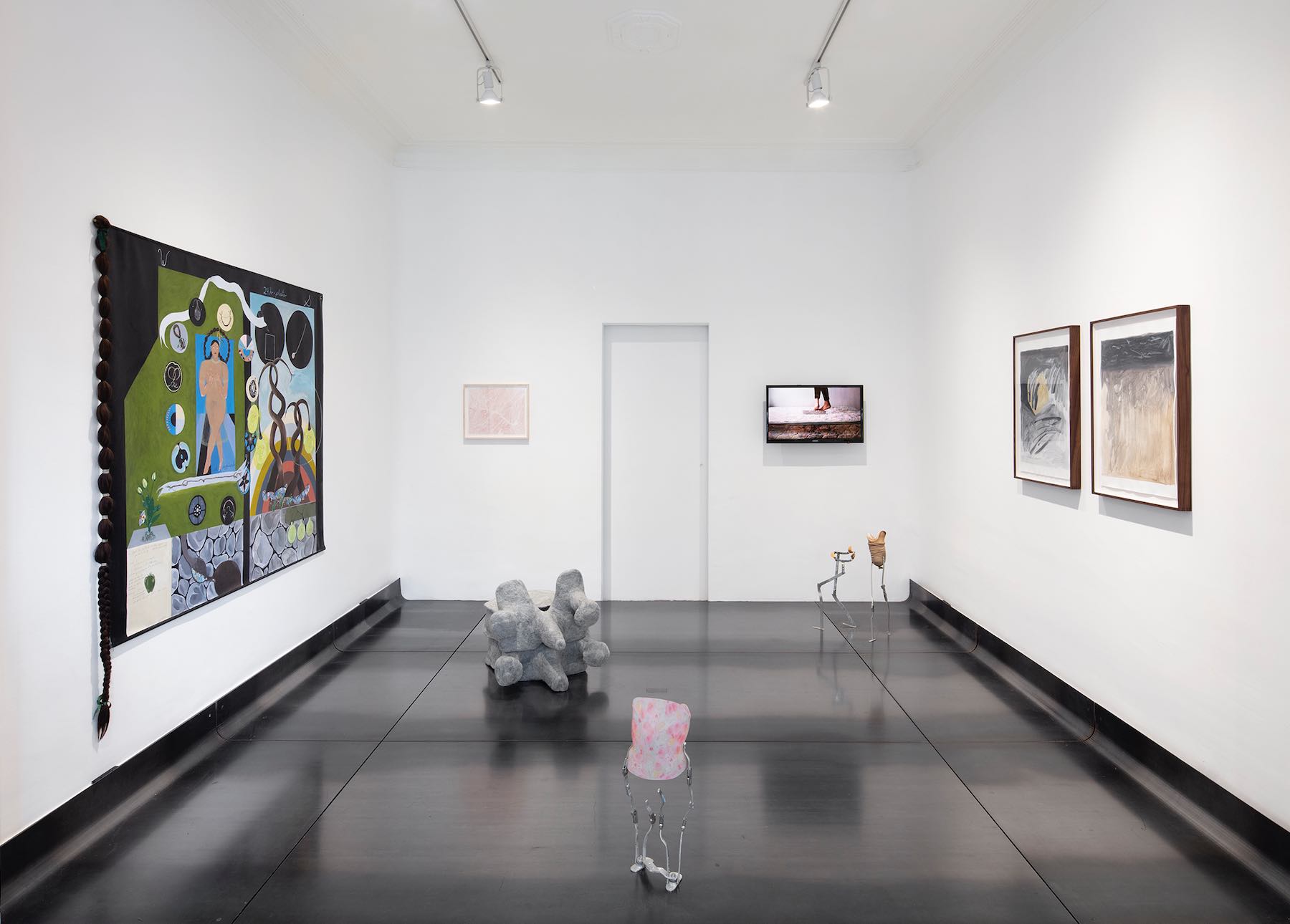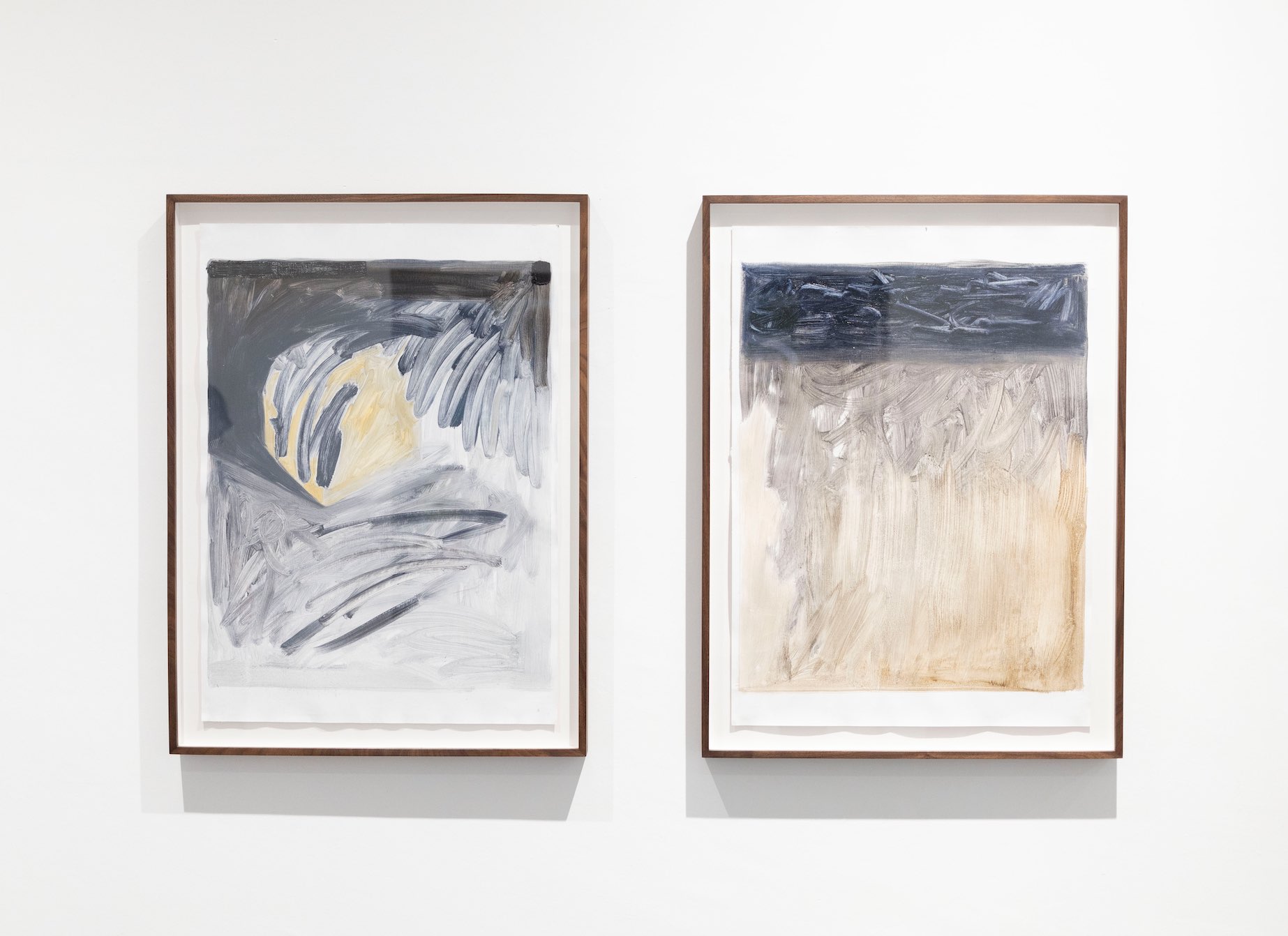
Review
From the Embrace of the Night: La luz proviene de ahí at Campeche.
by Cristina Torres
Reading time
5 min
The erotic is a measure between the beginnings of our sense of self
and the chaos of our strongest feelings.
Audre Lorde
For the western gaze, talking about light usually implies talking about the visible, the camera-eye, and the acknowledgment of an obvious objectivity. A perception that, owing to its hegemonic and, therefore, rationalistic and patriarchal condition, accedes only to a flat, superficial luminosity; light for entering and dissecting. Thus, intuiting light from its dark, subdermal facets requires an entirely different set of skills, a certain vibrational sensitivity, a willingness to feel.
It is with this embodied, vulnerable, receptive, multiple, and attentive gaze that La luz proviene de ahí speaks, as the inaugural exhibition of Campeche, located on its namesake street in Colonia Roma. The participating artists are Alicia Ayanegui, Julieta Gil, Darinka Lamas, Berenice Olmedo, Paloma Rosenzweig, and Astrid Terrazas. The works mounted in this space spring from contact, skin, and chaos; knowing themselves to be in a world that separates out what’s unified, that historicizes what hierarchizes, and that fears the power of the shadows.
Each of the works is a germinal declaration of polyglot voices that preserve memories of a preverbal place, of a phenomenon integrated by layers of being and states of being: that is, writing at the time of this sexist biopolitical regime, of ableism, of the division of the sensible, of rule by enlightened reason. The masculinist gaze makes reality an issue of throwing out the body, erotic voices acting because life traverses them.
Pedestal para una persona digna de ser recordada by Julieta Gil continues the artist’s investigation into feminist protestors’ writings on urban monuments in Mexico, using complex 3D mapping techniques in order to recover these collective traces, thus rendering an account of this political struggle that has otherwise been deliberately erased, minimized, and made historically invisible. In this case, the record has been materialized using beeswax and pigments. In the artist’s words: “How do we represent plurality, temporality, and multiplicity of stories across time through an object that otherwise represents only the timeless, monolithic, permanent, hegemonic, and patriarchal?”*1

Darinka Lamas presents two works in which she explores the relationship between architecture, the material history of its components, and the choreography produced by the bodies running through it. While in the video Limítrofe we see the artist balancing her body on a partition block on a mattress—prisms on prisms within prisms built to contain and to protect bodies—in the sculpture Recuerdo que ni la materia más dura conserva su forma one can see the same kinds of blocks inscribed with dust from found materials, dictating phrases like, “Fossilized magma where I’ve lived all my life” (“Magma fosilizado donde he vivido toda la vida”), “Random amalgam of two times and two spaces” (“Amalgama azarosa de dos tiempos y dos espacios”), “A doorstop allowing light to seep in” (“Un tope de puerta que permitía a la luz colarse al interior”).
Distributed on the floor of the gallery are the sculptures titled MEKHANÉ, Akro-Bainein, and TEA, in which Berenice Olmedo uses orthopedic materials, most of them from a tianguis (open-air market) in Iztapalapa, including stockings, orthotic bars for limbs, corset collars, and underwire girdles. The works suggest small bipedal entities that walk and stand tall. The artist focuses on the medical scaffolding used to support bodies that for many reasons cannot do so themselves, alluding in a way that is both playful and direct to the vulnerability and inherent fragility that is multiplied by class oppression and marginalization.

Alicia Ayanegui presents Dentro and La luz proviene de allí, which gives the exhibition its title. As part of the artist’s pictorial investigation coming out of the nocturnal imagination, these works explore the membranes through which light peeks out into the darkness of intimate spaces, which are reconstructed by that encounter with energy, and are absorbed by an atmosphere of stillness and contemplation laden with potency: “I find the erotic such a kernel within myself. When released from its intense and constrained pellet, it flows through and colors my life with a kind of energy that heightens and strengthens all my experience.”*2
Astrid Terrazas creates collages using cultural symbols and body parts that are meaningful to her personal history: she migrated from Mexico to the U.S. as a child. Cantando himnos en el jardín atrás de Walgreens accounts for a search through abstract geometry that somehow recalls Hilma af Klint’s compositions, as well as surrealism and characters from ancestral traditions. The work transmits a code that is profoundly intimate, like a chromatic and allegorical pictobiography about personal transformation and one’s sense of rootedness.
_16_27_12.jpg?alt=media&token=ceb678ed-31e0-425d-83b8-8c0cd610d7c9)
Dos vértebras is part of Cuerpos suaves, the latest series by Paloma Rosenszweig in which she represents organs and bones with felt, on another scale. Confronting a history of western anatomical representation that opens and penetrates bodies in order to expose their details, both this sculpture and the drawing Fibras 2 offer a tactile and gentle look at the structures on which our biology rests, allowing us to move. An anatomical writing that is delicate, material, experiential.
Audre Lorde spoke about the relevance of learning to understand the latent and ancient power of bodies: “Our erotic knowledge empowers us, becomes a lens through which we scrutinize all aspects of our existence, forcing us to evaluate those aspects honestly in terms of their relative meaning within our lives.” Grouped together, the works in this exhibition speak from this deep and multiple form of knowing, from what is inescapable about the political dimension running through us, all the way to the need to write knowing that it is something we do with our flesh. Life also springs from the embrace of the night.
*All Audre Lorde quotations come from “Uses of the Erotic: The Erotic as Power.”
*1: Julieta Gil, as quoted in the exhibition’s curatorial text.
*2: Audre Lorde
Published on July 26 2021